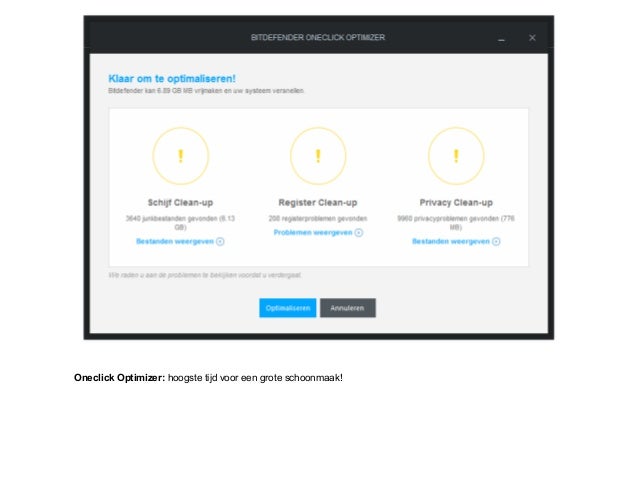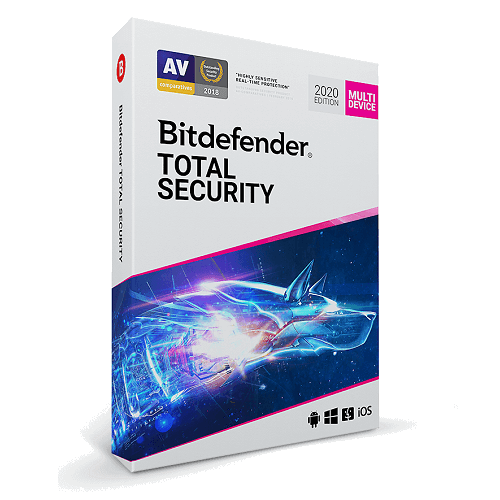
- #BITDEFENDER SOFTWARE BUNDLE HOW TO#
- #BITDEFENDER SOFTWARE BUNDLE FULL#
- #BITDEFENDER SOFTWARE BUNDLE SOFTWARE#
- #BITDEFENDER SOFTWARE BUNDLE CODE#
#BITDEFENDER SOFTWARE BUNDLE SOFTWARE#
The last piece of our puzzle is to set up a Web Content Filter MDM profile, which can be configured in Catalog > MDM Profiles > New.Īfter adding the Bitdefender custom software and MDM profiles to a policy, you should be able to successfully deploy Bitdefender to the devices in that policy.
#BITDEFENDER SOFTWARE BUNDLE HOW TO#
Note: See How To: Configure and Deploy a Custom MDM Profile for details on how to bring this custom profile into Addigy. The SSL certificate in Keychain Access can be exported by right-clicking the certificate in System and selecting "Export (name of cert)."Īfter that, add it to Apple Configurator (if you are using Windows, you may need to use an alternative profile creation tool like iMazing). To properly deploy this SSL certificate, you must add it to the keychain on a device with Bitdefender and ensure it is approved. Adding this Team ID to the Allowed Team Identifiers section of the Kernel/System Extension MDM profile will whitelist all extensions under that Team ID. The Team ID for Bitdefender is currently GUNFMW623Y.
#BITDEFENDER SOFTWARE BUNDLE CODE#
Please note below the sections where these Identifiers & Code Requirements need to be added in the Payload: Access to Protected FilesĬonfiguring the Kernel Extension and/or System Extension Profile Identifier "" and anchor apple generic and certificate 1 /* exists */ and certificate leaf /* exists */ and certificate leaf = GUNFMW623YĪnchor apple generic and identifier "" and (certificate leaf /* exists */ or certificate 1 /* exists */ and certificate leaf /* exists */ and certificate leaf = GUNFMW623Y)Ĭom.dci-network-extensionĪnchor apple generic and identifier ".dci.dci-network-extension" and (certificate leaf /* exists */ or certificate 1 /* exists */ and certificate leaf /* exists */ and certificate leaf = GUNFMW623Y) Identifier BDLDaemon and anchor apple generic and certificate 1 /* exists */ and certificate leaf /* exists */ and certificate leaf = GUNFMW623Y


The known Identifiers and code requirements for Bitdefender are listed below they can be pasted into a PPPC Profile: Indentifier
#BITDEFENDER SOFTWARE BUNDLE FULL#
To prevent prompts for Full Disk Access and additional permissions, a PPPC payload can be deployed which automatically sets these permissions. Save & Review your custom software, and confirm the changes.Add a condition script and/or a removal script if desired.By clicking the Add button, the installation script will be filled in for you. Once the files are added, your custom software should look like this:Īddigy will automatically generate the installation script for the. If you open the Bitdefender DMG, you'll see the two files that you will need: To make things as simple as possible, we recommend getting the PKG and XML files that are inside of the DMG and uploading them into Addigy. The Bitdefender installer will normally be a DMG file. Configuring the Kernel Extension and/or System Extension Profile.Below you can find a list of minimum precautions you can take to protect the devices on the local network.This KB article serves as a guide on installing Bitdefender via Addigy, along with profiles for PPPC permissions, Kernel Extensions (KEXT), and System Extensions. The release date and support period are also an important factor. The consensus is to pick a vendor with a track record in upholding security and delivering timely updates for their products. Protecting your IoT gadgets starts from the moment you decide on a specific manufacturer. Complete the picture by adding smart home appliances like coffee makers, televisions, toasters, refrigerators, and bathroom scales and don’t forget about the various toys, and even jeans, you have that may also rely on WiFi! If that number seems high, think about how many laptops, smartphones, tablets, smartwatches, smart entertainment devices, smart thermostats, security, and monitoring systems are in your home. So it’s safe to assume that a connected device has to withstand a fair share of cyber-attacks.īitdefender research shows that there are roughly 13 smart devices or accessories in an average US home today, with predictions of about 20 or more by the end of this year. In 2016, the average time for infecting an IoT system was six minutes from the moment of exposure a year later, that average fell to two minutes.

Hackers are constantly on the prowl for new targets and have automated their methods to find and compromise vulnerable devices. Unfortunately, there are often very dire consequences of failing to protect oneself against the cyber threats such as viruses, malware, spyware, and ransomware that can plague our home network and some of these IoT smart devices. Smart devices have become a large part of our connected world, and they require the same level of protection as any other device on your network.


 0 kommentar(er)
0 kommentar(er)
